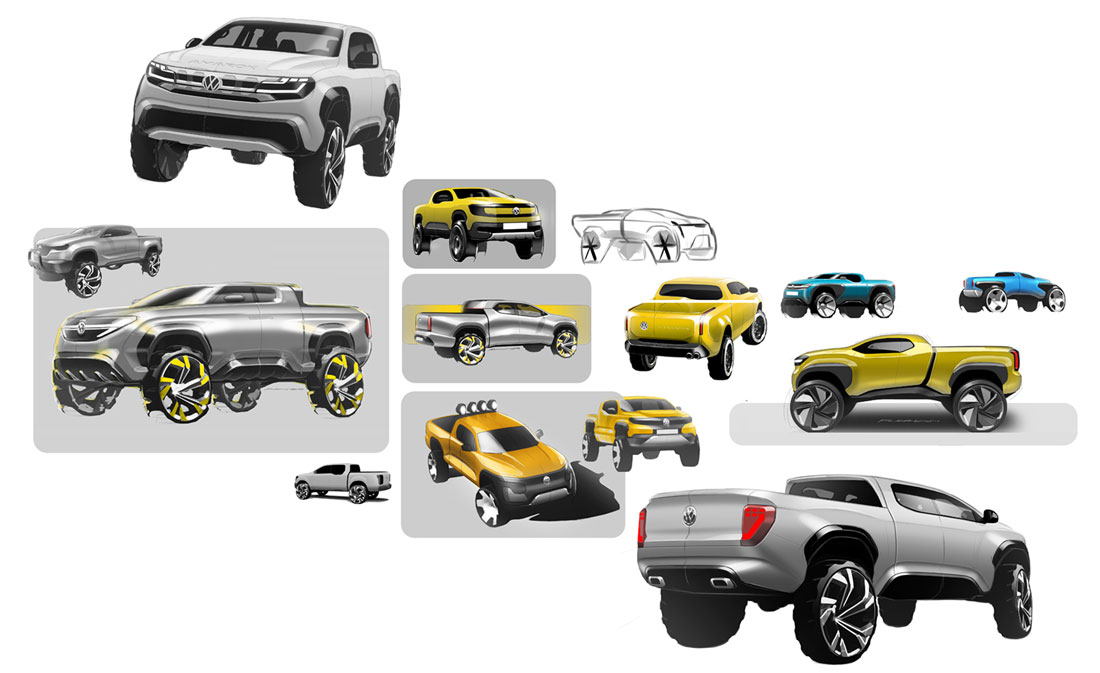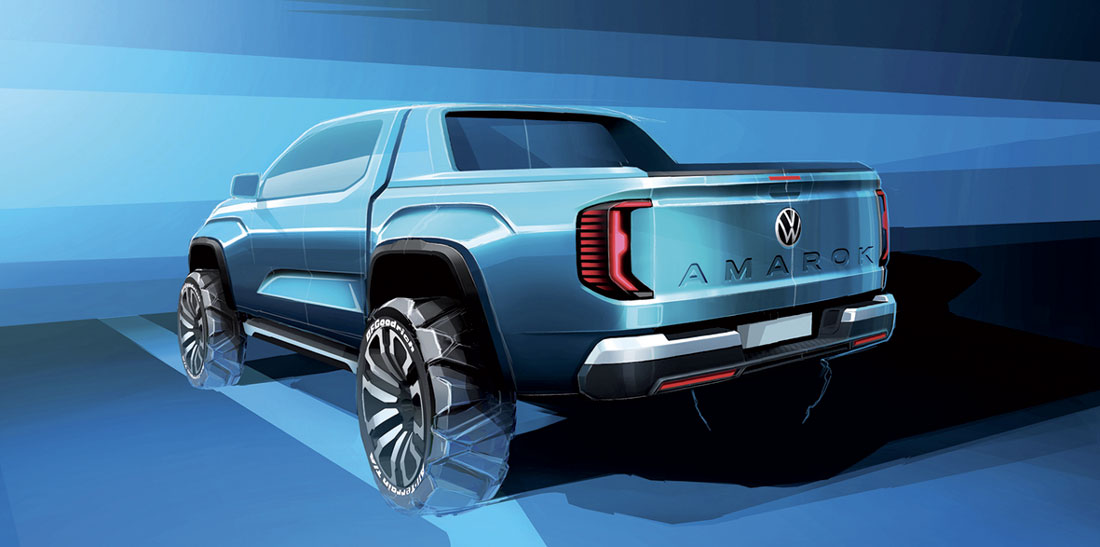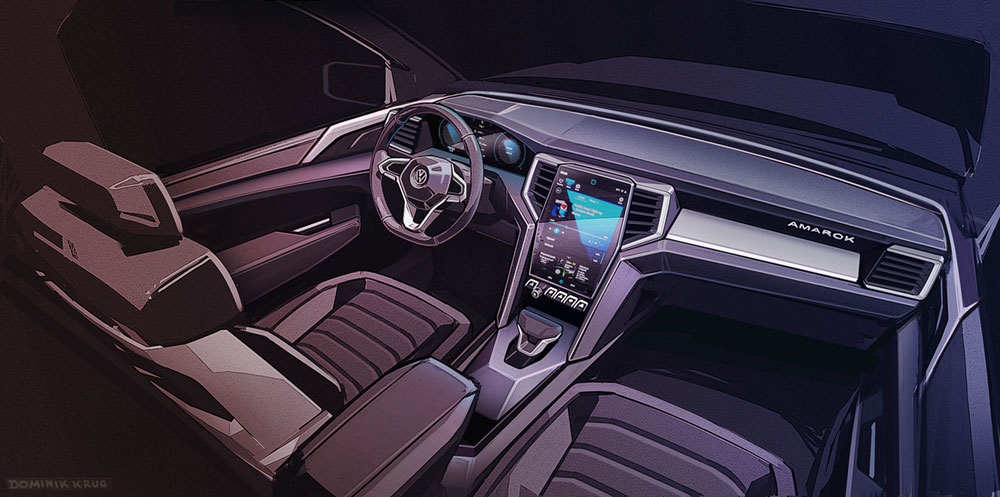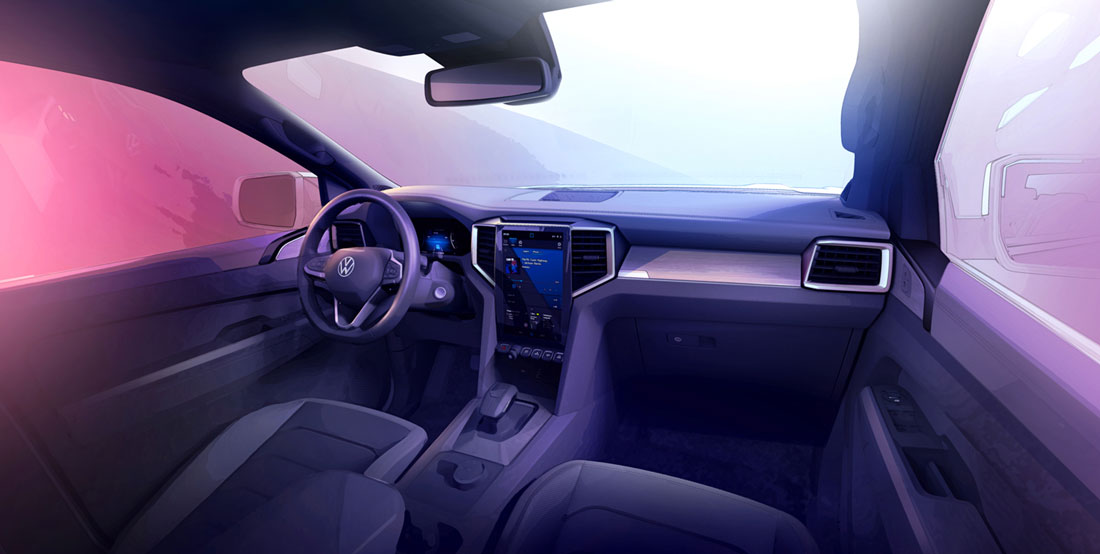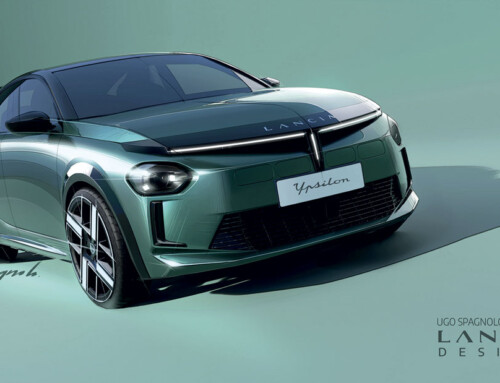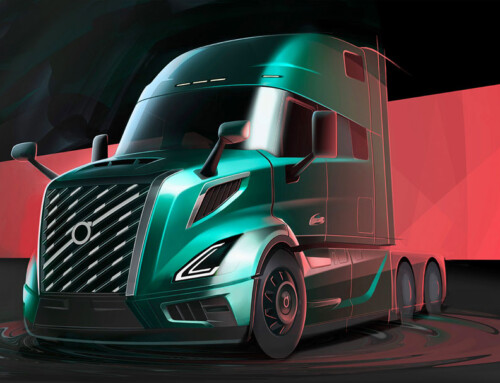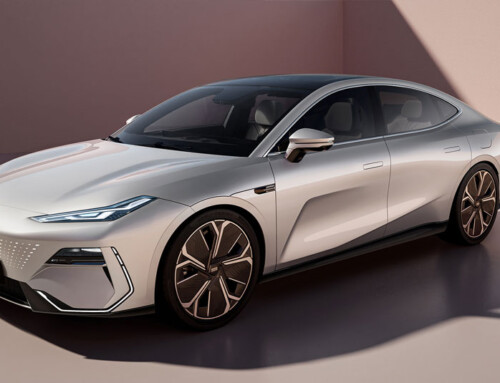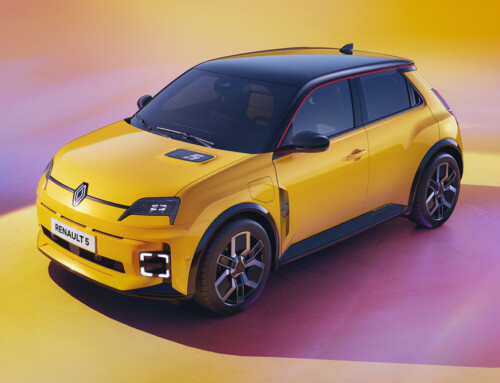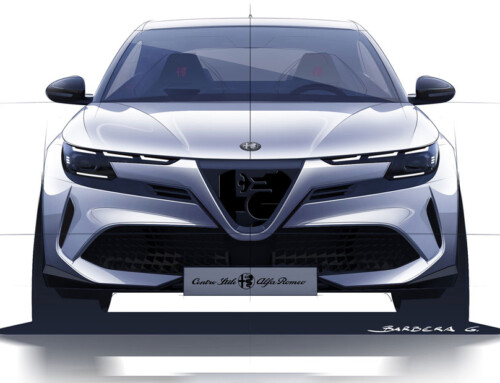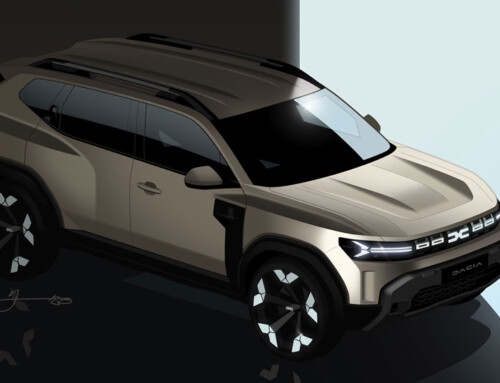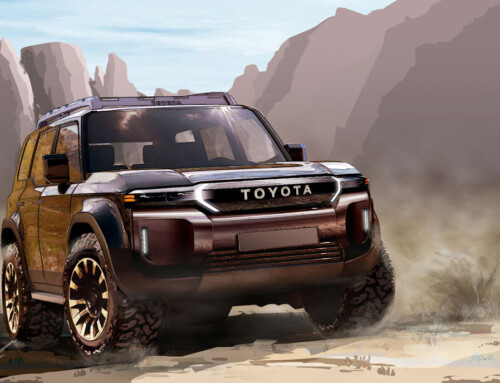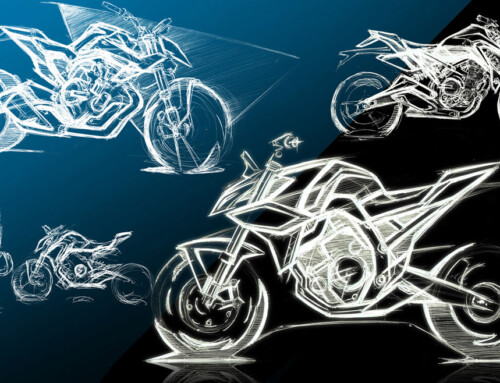This time the Volkswagen designers worked on a Wolfsburg-Melbourne line. The second generation of Amarok, the successful pickup of the German maker which in its previous edition sold 830 thousand units, is in fact destined to glide mainly among the kangaroos over the vast Australian expanses, where the “utes” – abbreviation for “utility vehicles” – dominate the roads. “This is the successor to an icon,” says Gu-Han Kim, head of the Volkswagen design studio in Melbourne and leader of this project.
Five stylistic themes
It is Dennis Kosik, exterior designer in Wolfsburg and author of the winning theme, who recalls how the final choices were made. “We started with five stylistic themes: Amarok Gene, which followed the old Amarok with clear VW school lines; Urban Pickup, with a softened commercial vehicle design; Masculine and Tough, with a more powerful and vertical structure; Heavy Duty, with very high optical groups, suitable for demanding use; finally Rugged, very off-road, with a series of protective shields. The Masculine and Tough formula of Dennis Kosik prevailed.
Three levels of front execution
It stands out for its character lines, from the headlights to the C-pillars, the rectangular wheel arches with sculpted wheel lip mouldings, the paints that look like molten metal, the more vertical skid plate, and the grille with a main bar to “protect the eyes of the wolf.” The wolf? Yes, it seems that Amarok really means wolf in the Inuit language of the deep North.
“In general, there are three levels of front execution,” explains Kim: “There is the basic Amarok, characterized by the robust, black bumper, then there are the two series Life and Style with a V-shaped front and a horizontal theme in the same colour as the body, emphasizing the width of the car. Finally, with an X-shaped front, there are PanAmericana, which has a more off-road character, and Aventura, more road-going: they represent the top of the range.”
Australia as a reference
Adds Florian Richter, designer for the exteriors of this project: “It was very important to be in Melbourne, with Australia destined to be one of the most important markets for Amarok, in order to better understand the customers and use cases of this product. There are many generations of ‘utes’ here. One can spot current trends that help predict the future of pickups.” Under the guidance of Martin Pohanka, head of interior design in Wolfsburg, and Peer Witt, the interiors essentially bear the signature of Dominik Krug, responsible for the stylistic and structural choice of the dashboard, which radiates from a vertical screen on the centre console, which according to him offers “a very courageous, expressive and sculptural three-dimensionality.”
A DNA Matter
The T-shaped architecture prevailed over the two alternatives, one completely linear (designed by Richard Mohos with the collaboration of Damien Grossemy) and the other linear but divided in half by a horizontal screen (designed by Matthias Kim). “It was important to maintain the DNA of Volkswagen and Amarok by integrating the new architecture, which is unusual in VW commercial vehicles. The end result is a very strong horizontal theme that opens to integrate the vertical screen.” With regard to HMI, the new Amarok imposed a particular challenge on the development team: how to implement and build on top of an existing OEM software platform sourced by VW´s cooperation partner. “It not only has to look like, the HMI also has to feel and interact just like any other authentic Volkswagen,” Roberta Ricci, the responsible HMI coordinator, explains.
Colours and materials
Florian Wendt, in charge of the overall project, continues: “When selecting a specific drive mode, you´ll discover intricate 3D animations of the new Amarok ploughing through snow, crossing a muddy trail or speeding through a solid tarmac road. We sought to set priorities and a whole new benchmark with these animations.” Great attention was paid to the design of the details and to the choice of materials and colours, in a crescendo of refinement that takes the PanAmericana and Aventure models to levels very different from the basic Amarok. The credit goes above all to Pavol Sajtak, head of C&T, and his collaborators: Marcel Dornberg and Christiane Fleischer (seats), Theresa Scholl (paints and materials), Fatih Tabak (surfaces and structures), without forgetting Andrea Hillerdt for paints of the exteriors.
(Full article in A&D n. 257)


